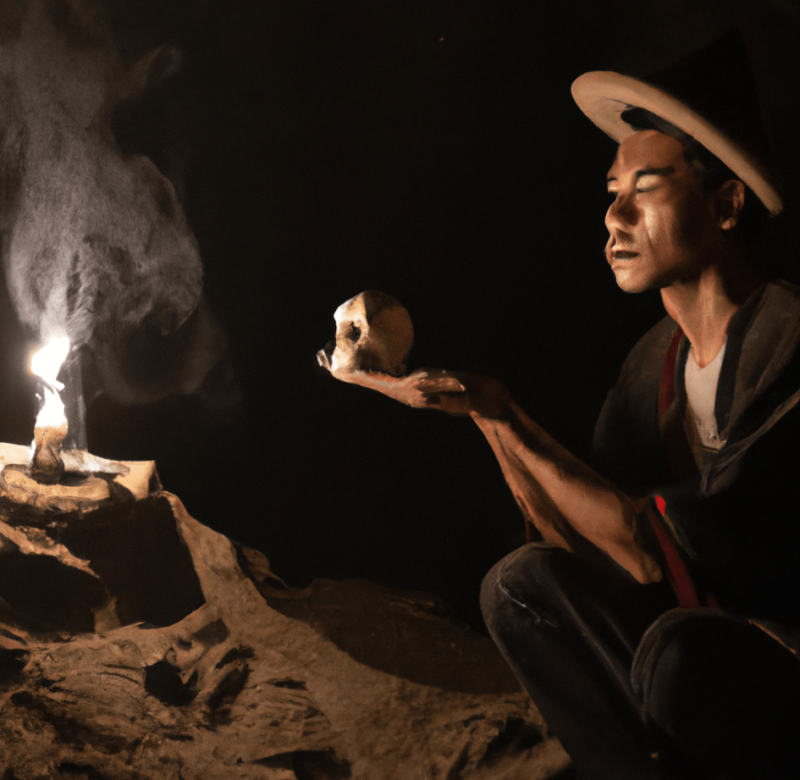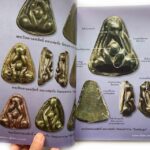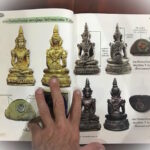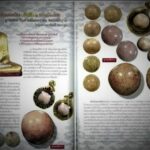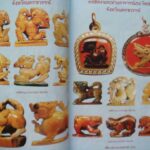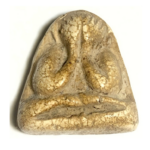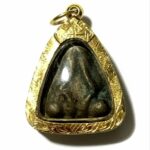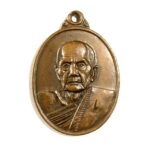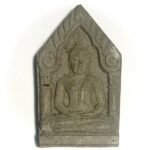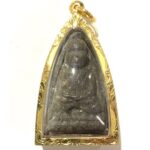What are Thai Amulets?
Thai Amulets range from a great number of types, with Buddhist amulets, differing from other types of amulets such as Brahman/Hindu, Animist, Necromancy related, and even magical charms which are empowered just based in the belief in elemental powers and herbal properties inherent within the substances themselves. Thai people, and of course not just Thai people, but people around the world, both those who believe in Buddhism, as well as those who adhere to occult beliefs, collect and wear Thai amulets, of many kinds, for a vast number of reasons and goals. These goals align with what amulets have usually been made for and believed in throughout Human history, and the use of amulets has been found in I believe almost every, if not every single Human culture that ever existed on earth. However, Thai Buddhism has its own specific pantheon of Classic Traditional amulets of high Religious, Spiritual importance, and which is also indelibly sealed on the national Identity and Culture of Thai Buddhist People.
Such amulets are purely Buddhist, and what most people would think of when referring to a ‘Thai Amulet’, such as the various models of Pra Somdej Buddha-Image Votive Tablets, or the 5 Regional Famous Buddhist amulets from archeological digs such as the Pra Somdej, Pra Pong Supan, Pra Nang Paya, Pra Kong and Pra Rod amulets, classed as the ‘top 5 Benja Pakee’ amulets of all Thai History.
In fact, they are merely academically categorized for official documentation as amulets of National Importance, from chosen sets of famously popular archeological dig find amulets, known for the region they came from, or were discovered in, and chosen to represent each of the five regions of Thailand. But in truth, there are absolutely hundreds of thousands of different kinds of Thai amulets, both ancient and modern.
Why do People Wear Thai Amulets?
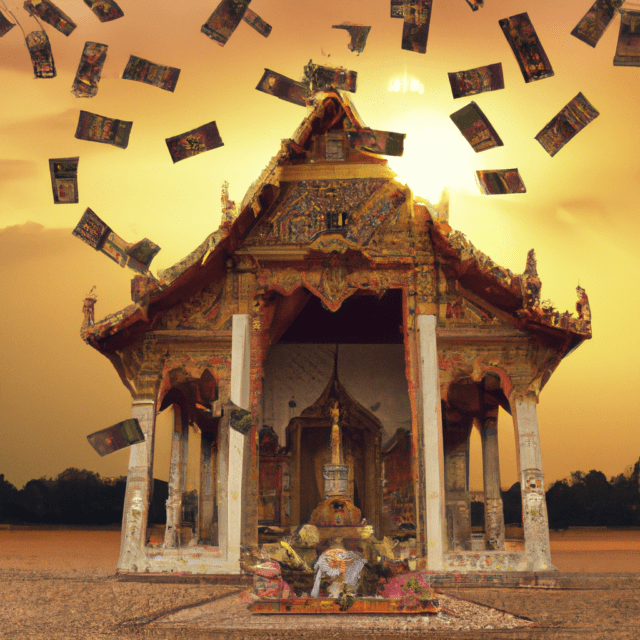
For Many pure Buddhists, the wearing of a Buddha Image, or an image of their mentor and teacher (Guru Monk), is a way to connect with the Guru or the Buddha, and to remember one’s practice, and keep focused, and to keep one’s precepts. For others, Thai amulets, be they Buddhist in nature or not, are used for a multitude of goals, including protection, lucky fortunes, good business and monetary gains, power of attraction, commanding power, invincibility, charming speech, evasion, and many other purposes.
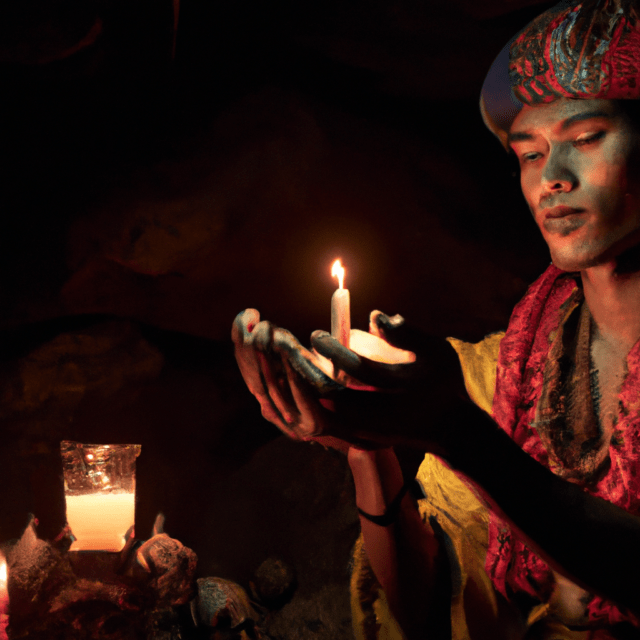
The Practice of Creating Amulets in Thailand and Ancient Siam
According to ancient military records, such as many found in the ancient ‘Pichai Songkram’ parchment Grimoires, Siamese warriors often carried amulets for protection and good fortune in battle. These amulets, created in various forms, were believed to bestow invincibility and ward off harm. They were typically bestowed by revered Buddhist monks, Ruesi Hermits, or Lay Sorcerors, skilled in mystical arts, and deeply respected by the community. The belief in the power of these amulets was so strong that it was passed down through generations across millenia, in what came to be known as the Buddhist Kingdom of Siam.
Thai Amulets can be categorized in various ways, based on their origin:
- Naturally Occurring Objects: These are believed to have intrinsic protective qualities and are guarded by spirits. Examples include certain types of iron, curved antlers, boar tusks, and tiger fangs, as well as other substances such as skin, bone, sacred woods, and other natural substances.
- Man-Made Objects: Created through the making of sacred clay admixtures using powdered herbs earths and other dried substances mixed with sacred oils and holy water, as well as metallurgical amulets, made with ancient alchemical practices, these include various metals and alloys, empowered and blessed to protect the bearer.
Thai Amulets can also be classified by their form or purpose of use:
- Worn Amulets: These are worn on the body, such as headbands, belts, or armbands.
- Embedded Amulets: These are implanted in the body, such as golden needles or metal talismans.
- Ingested Amulets: These are placed in the mouth, like certain types of bezoar stones. Such types of power stones are used by the Ruesi Hermits in Thailand.
Materials used for amulets include:
- Metals
- Powders
- Earth
- Various Other Materials: Such as special paper, resin, or clay.
- Animal Parts: Including fangs, horns, tusks, claws, and skins.
- Human Remains: Such as hair or cloth from the deceased.
- Miscellaneous Materials: Such as woven fabrics.
Amulets are also differentiated by their appearance:
- Male Figures: Like child spirits, hermits, or mythological figures.
- Female Figures: Such as the goddess of rice or other nurturing spirits.
- Animal Figures: Representing sacred animals like tigers, elephants, or mythical creatures.
Amulets can also vary by the level of sanctity:
- High-Level Amulets: Worn on the upper body and believed to carry the blessings of the Buddha.
- Lower-Level Amulets: Such as those used for fertility or charm, considered less sacred.
- Hanging Amulets: Like banners or small decorative items.
The creation of amulets dates back to times before Thailand, Siam, or even organized religion, and is indeed a Global phenomenon, however, the present day continued practice of magical amulet making with unbroken tradition as a living practice, is hardly to be found elsewhere outside of Thailand, South East Asia and Africa, but with Thailand having its most prominent and national presence. Amulets are almost as old as humanity itself, deriving from times when natural phenomena and the elements were revered. Early humans attributed divine significance to the sun, moon, stars, and elements, crafting objects to embody these forces. As civilizations evolved, so did the complexity and purpose of these amulets, influenced by cultures such as Egypt, Greece, and Rome.
With the advent of organized religions, such as Brahmanism, amulets began to represent deities like Shiva, Vishnu, and Brahma. These figures were worshipped for their divine power, which was believed to be channeled through the amulets.
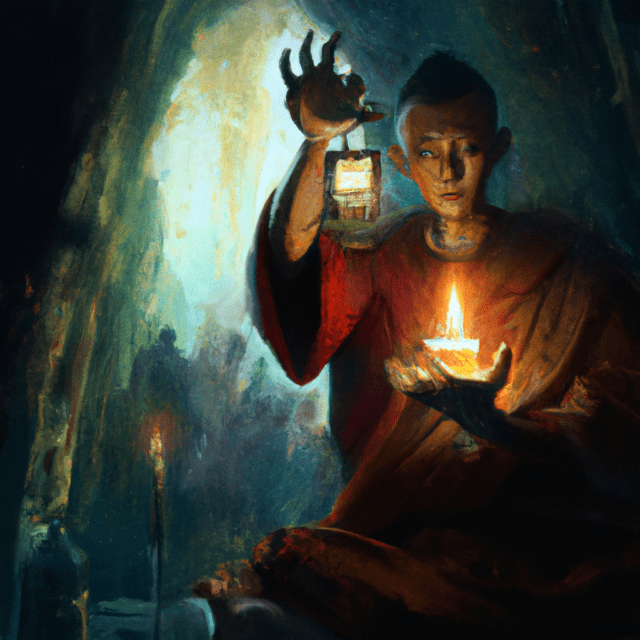
In Buddhism, established around 2,000 years ago, amulets continued to play a role. Followers of the Buddha, who achieved enlightenment, created amulets to embody the teachings and spiritual power of the Buddha and his disciples. These amulets were believed to offer protection and guidance, reflecting the Buddha’s attributes of compassion, wisdom, and purity.
Hence, Thai Buddhist amulets serve as a means of protection and spiritual connection, evolving from natural objects to sophisticated symbols of religious and mystical significance. The terminology used to describe these objects varies, but they are commonly known as “amulets” or “charms,” depending on cultural and contextual nuances.
